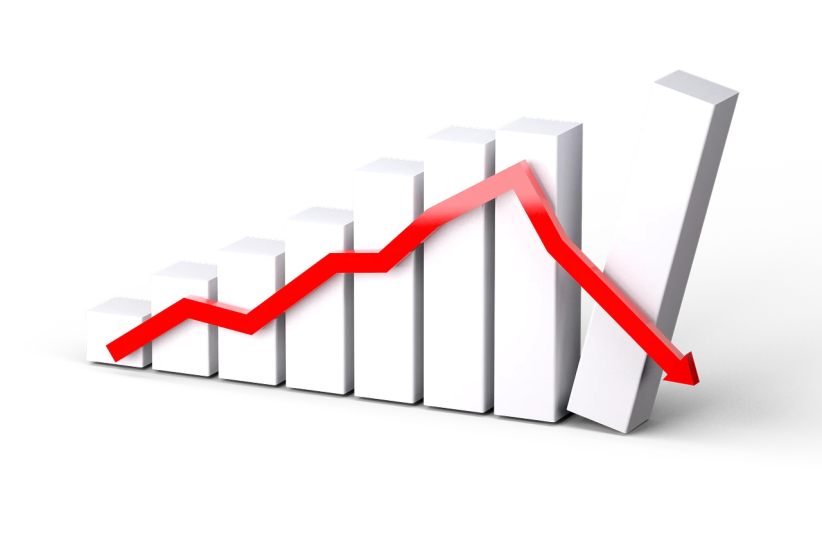Israel's currency, the new Israeli shekel, suffered the most since the COVID-19 pandemic, tanking to a 4.73% decrease against the US dollar, according to new research from City Index.
The report analyzed countries with the highest GDP and the strength of their local currency against the US dollar, using the available data from the International Monetary Fund (IMF).
From 2020 to 2023, Israel saw its GDP grow by $126 billion, meaning an increase of 30%. Back in 2020, the Israeli shekel to US dollar exchange rate saw $1 being equal to NIS 3.42. By 2023, that exchange rate was $1 being equal to NIS 3.59. Taking into account the GDP growth, that ends up meaning that Israel's currency has weakened by 4.73%.
The only other country that comes close to Israel's currency drop in this regard is Russia, which saw its currency weaken against the US dollar by 4.67%. However, the Russian ruble also saw other factors aside from the pandemic at play, such as the Ukraine-Russia War and subsequent widespread and unprecedentedly severe economic sanctions.
And despite that, Israel's currency still weakened more, which came amid widespread economic uncertainty in the wake of political instability.

Coming in a relatively distant third place is the United Kingdom, which saw its currency weaken 3.92% against the US dollar. In fourth place was Indonesia, which weakened 3.14%, and Australia at fifth, which weakened 2.2%.
By contrast, at the very bottom of the list was Mexico, which saw its currency actually strengthen 19.72% against the dollar. In this regard, Mexico's growth was due to a 53% GDP growth, large capital investment from the US and China, and a very cautious and tighter fiscal policy.
Singapore saw a growth of 3.33%, which City Index credited to low inflation, high interest rates, and a 48% GDP growth.
Israeli economy: Weak currency, high cost of living
The findings of this City Index report come at the same time as new data from the Organization for Economic Co-operation and Development (OECD), which found that Israel had the highest cost of living among all member states, clocking in at 38% higher than the average.
However, in June of this year, comparative price level data found that Iceland, Ireland, and Switzerland all had higher costs of living, with Switzerland's being 21% above Israel's.
